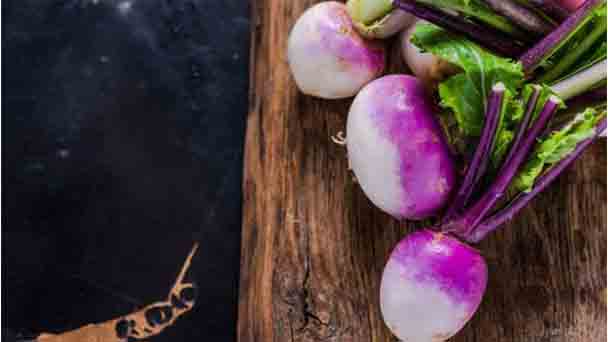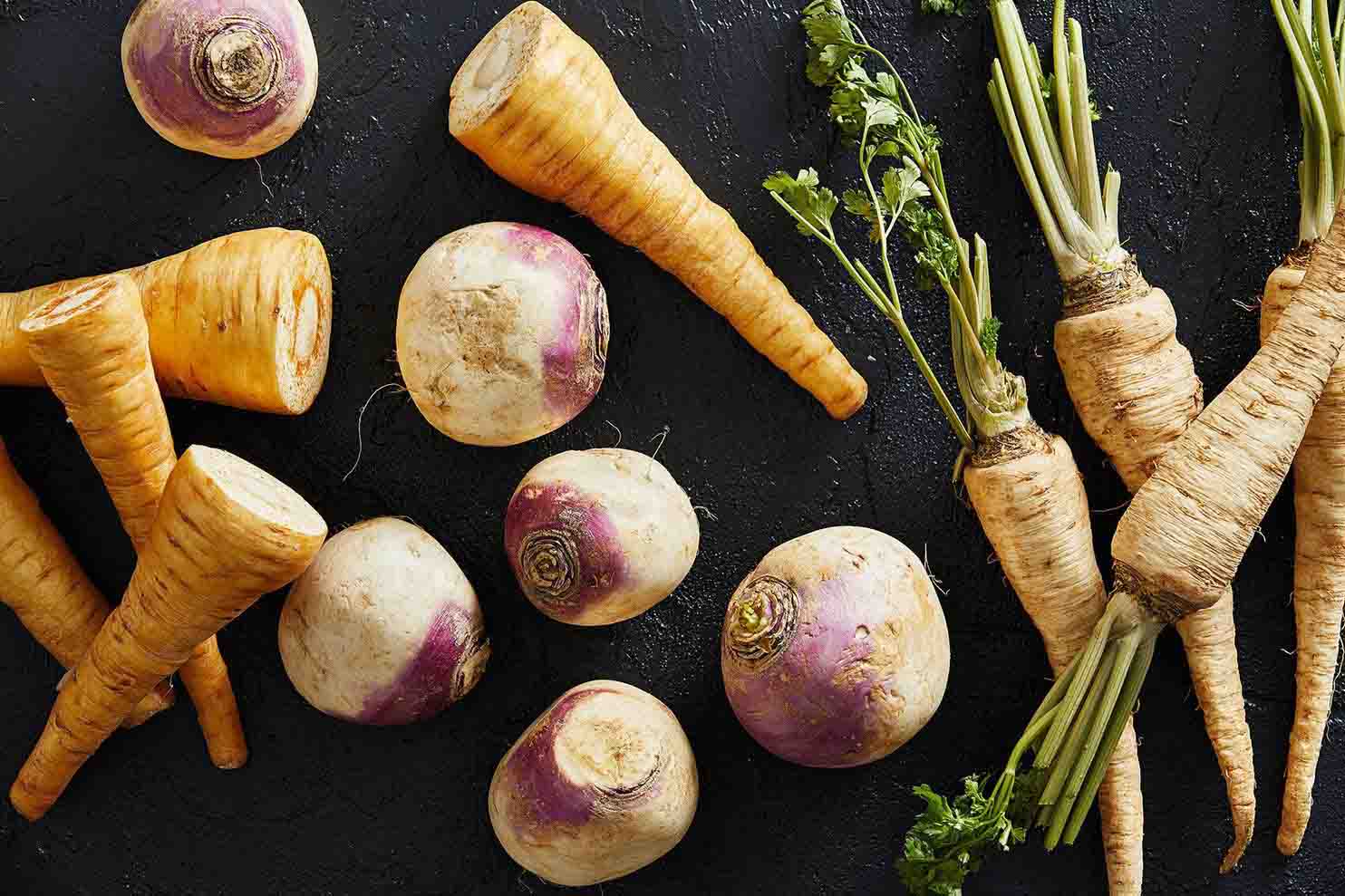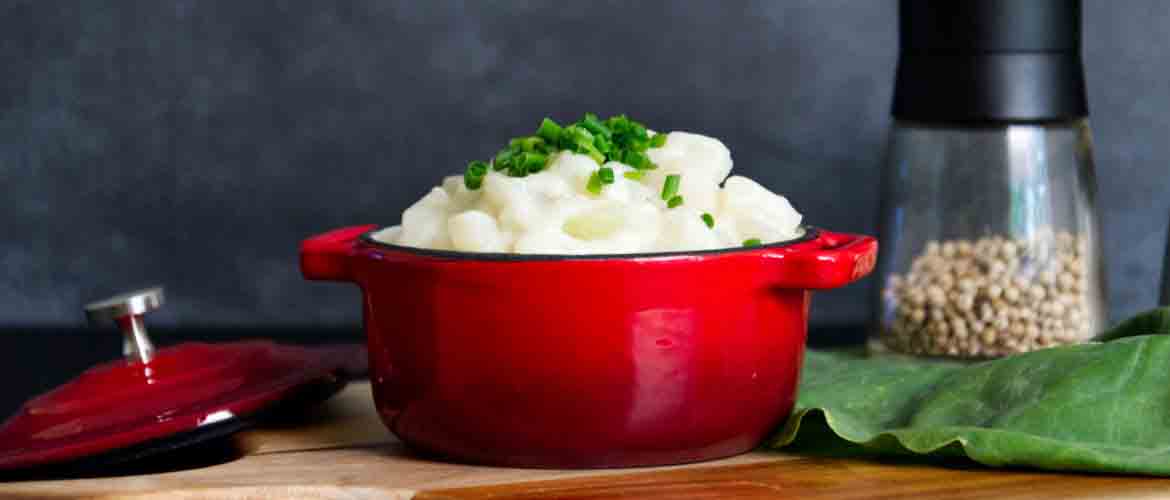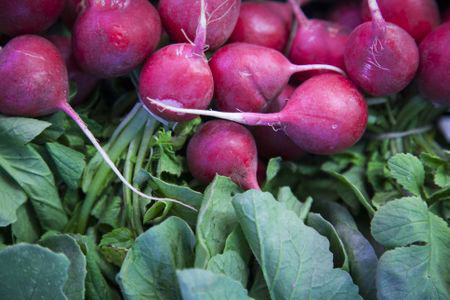Turnip Profile
Written by Joy
Nov 05 2020

Turnip is a cruciferous, brassica genus biennial herb, up to 100 cm tall. The roots are fleshy, with white, yellow, or red skins, and the roots are fleshy and have no spicy taste. The stem is upright, the basal leaves are large and lobed or compound. There are a few scattered bristles on the top and white sharp bristles on the bottom; the petiole has small lobes. Turnip is hairless, with powdery cream, sessile. The racemes are terminal. The sepals of turnip are oblong, petals are bright yellow, oblanceolate, siliques are linear, seeds are spherical, light yellowish-brown, and black near the navel. Turnip usually blooms in March-April and bears fruit in May-June.
Turnip morphological characteristicsTurnip efficacy and roleEdible value of turnipThe medicinal value of turnipTurnip cultivationLand selectionSoil preparation and fertilizationSowing methodThinningWeeding
Wuqing was originally distributed in Europe and has been widely planted in China. Turnip is suitable for sandy loam with loose soil, drainage, irrigation, and relatively sufficient fertility.
Turnip morphological characteristics
Turnip is a biennial herb with a height of 100 cm. The root is fleshy, spherical, oblate or oblong, with white, yellow or red skin, and white or yellow flesh without spicy taste. The stems of turnips are erect, branched, slightly hairy on the lower part, and glabrous on the upper part.
The raceme of turnip is terminal; flower diameter is 4-5 mm; pedicel is 10-15 mm long; sepals are oblong, 4-6 mm long; petals are bright yellow, oblanceolate, 4-8 mm long, with Short claws.
The longhorns of turnip are fruit linear, 3.5-8 cm long, and the fruit petals have a prominent midrib; the bill is 10-20 mm long; the fruit stem is 3 cm long. The seeds are spherical, about 1.8 mm in diameter, light yellow-brown, black near the hilum, with fine mesh pits.
Turnip efficacy and role
Edible value of turnip
Roots cooked or used to pickle sauerkraut, or as feed. Alpine mountains are used to replace food.
The medicinal value of turnip
Turnip flower is pungent, bitter, mild in nature and non-toxic. It has the effects of smart eyes and a light body. It can be taken with water and boiled juice to remove the accumulation of lump in the abdomen. Taking a little can cure the chest and abdomen caused by cholera.Turnip leaves are bitter in nature and taste, warm in nature, non-toxic, and have the effects of benefiting the five internal organs, ears, eyesight, and light body. It can make people's skin ruddy and shiny, energetic, anti-aging, replenishing qi. People are strong. Indications of weakness, fatigue, and poor eyesight.
Turnip cultivation
Land selection

Soil preparation and fertilization
Before planting, finely prepare the ground, add organic fertilizer as base fertilizer, and properly deep plough. Combined with site preparation, 667 square meters are applied with high-quality decomposed organic fertilizer 2-3 cubic meters. Sufficient organic fertilizer can make the fleshy root surface of turnip smooth, correct shape, good quality and high yield.Sowing method
The seeds are selected from local turnip seeds in Keeping County, and they are planted by machinery. The planting time is early and mid-August, the row spacing is 10-15 cm, the sowing depth is 1-2 cm, and the soil is 1-2 cm after sowing. The 667 square meters are sowed with 0.3 kg of turnip seeds mixed with 0.4 kg of dry sand. 667 square meters to protect 900-1100 seedlings.Thinning

Weeding
Combined with thinning and intertillage weeding, it can also be weeded manually. Field cultivating adopts mechanical field cultivating or manual field cultivating, first shallow and then deep to avoid root damage. The first and second thinning should be shallow plowing, hoeing the topsoil, and the last deep plowing.Latest Updated
- Benefits of Bugleweed - 7 Science-backed Health Benefits
- Bugleweed Dangers & Side Effects - Is It Poisonous?
- How to Plant Evergreen Trees - What You Should Know
- When to Plant Evergreens - Grow Guide for Evergreen Trees
- 12 Wonderful Evergreen Shrubs for Your Garden
- 12 Popular Evergreen Plants with Pictures for Beginners
- When And How To Prune A Lilac Bush Like a Pro
- How to Grow & Care for Lilac Vine (Hardenbergia Violacea)
- Japanese Lilac Tree (Syringa Reticulata) Care & Propagation Guide
- Shumard Oak Pros and Cons - What to Know
Popular Articles
- Winter maintenance of Antirrhinum Majus
- How to Grow Terminalia Mantaly Tree
- How to Grow and Care for Crossostephium Chinense
- How to grow Antirrhinum Majus in spring
- Peristeria Elata (Dove Orchid) Profile: Info & Care Guide
- Underwatered Snake Plant (Sansevieria Trifasciata) - Signs And How To Fix
- How to Care for Brazilian Jasmine Plant (Mandevilla Sanderi)
- How to Grow & Care for Graptopetalum Purple Delight in Summer
- Rosa Chinensis (China Rose): Plant Growing & Care Tips
- How to Care for Baby Sun Rose (Aptenia Cordifolia)